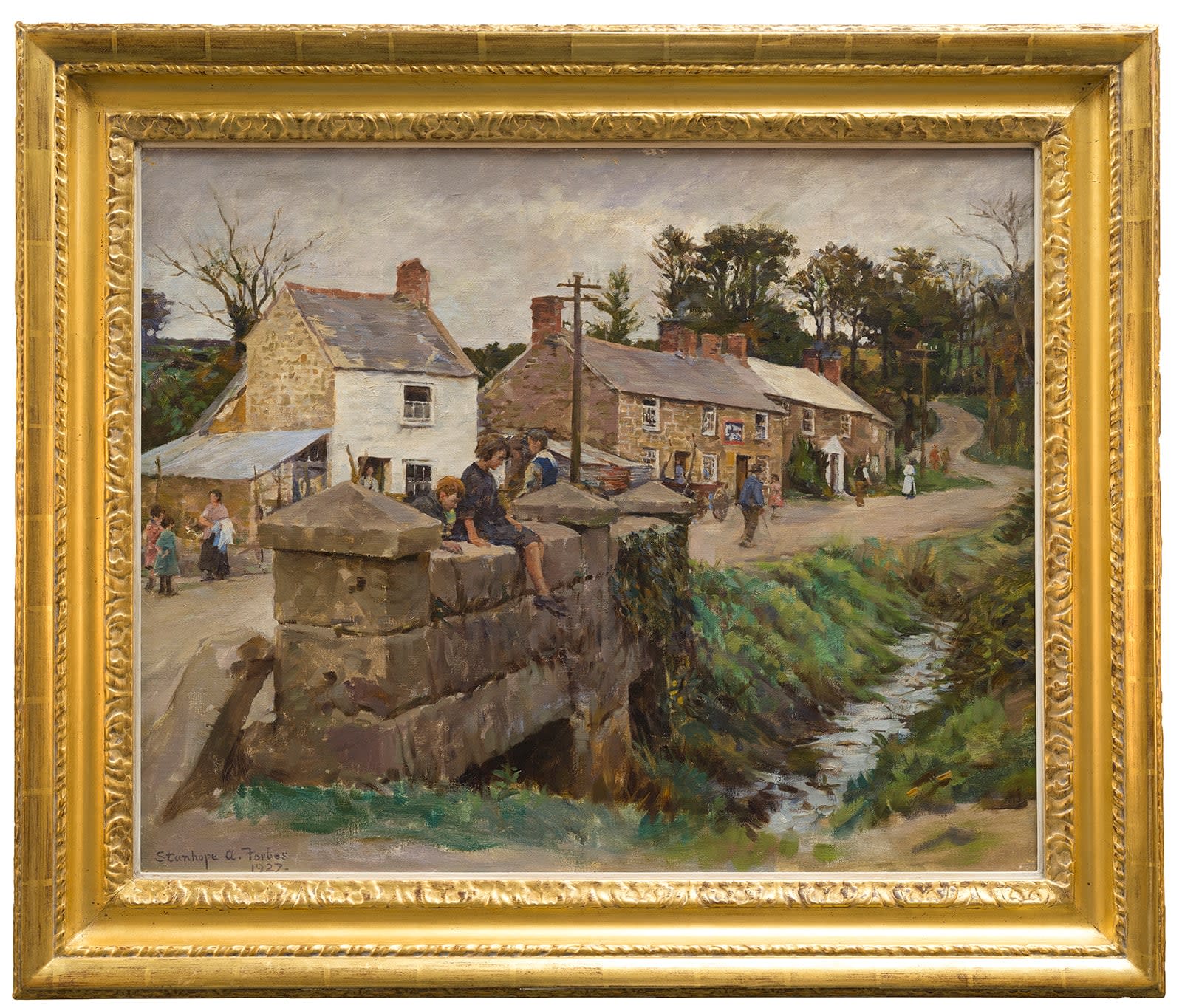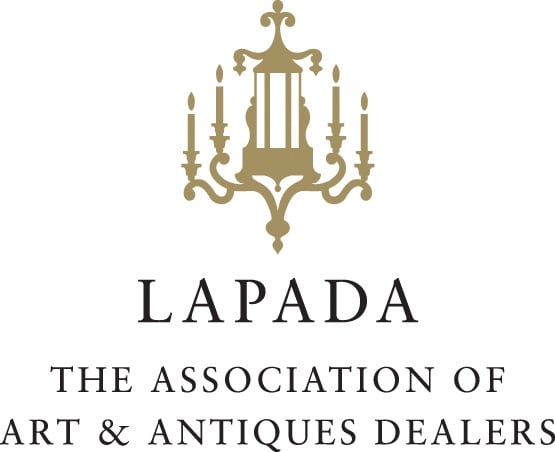Stanhope Alexander Forbes 1857-1947
Framed: 80 x 94 cm.; 31½ x 37 in.
Painted en plein air in 1927, The Old Bridge of Relubbus centres on a sturdy stone bridge spanning the River Hayle, its weathered masonry rendered in subtle shades of grey that mirror the overcast Cornish sky. Two children occupy the foreground parapet, their contemplative poses suggesting both innocence and the artist’s nostalgic view on the fleeting joys of childhood. The middle ground reveals a carefully choreographed scene of everyday activity: maternal figures conversing with their children, pedestrians navigating the dusty thoroughfare towards Tregembo Hill, and residents emerging from local dwellings, the warm ochre stonework of which contrasts sharply with the cooler palette of the bridge and surrounding atmosphere.
The verdant riverbank vegetation, punctuated by turquoise reflections, juxtaposes the earth-toned built environment. Crimson chimney stacks and scattered details in clothing provide colour accents that enliven the predominantly muted harmony, demonstrating the artist’s debt to his Parisian mentor, Léon Bonnat, who emphasised tonal relationships over academic finish.
The looser brushwork in The Old Bridge of Relubbus is typical of Forbes’ later, more expansive paintings.
It exemplifies Forbes’ mature aesthetic philosophy, in which social documentation gives way to picturesque idealisation. Unlike his earlier industrial subjects, such as Forging the Anchor (1892, Colchester and Ipswich Museum Services), the present consciously evokes pre-modern rural rhythms, with only telegraph poles betraying contemporary reality. It was a scene he turned to again in a comparable work Relubbus Bridge (1928-30, Penlee House Gallery & Museum). These nostalgic visions align with broader cultural anxieties following the Great War, when artists sought solace in pastoral tradition and which proved popular with the public. They remain as poignant evocations of a bygone world.
Provenance
Christie's, London, 6 June 2003, lot 10
Private collection
Christie’s, London, 13 July 2017, lot 66
Borro, 27 April 2018, where purchased by the present owner
Exhibitions
London, Royal Academy, 1927, no. 311




